I was thrilled to be featured as a guest writer on The Party Cut, one of two newsletters run by amazing writer and humorist Dennis Lee, earlier this week. I wrote about a wonderful homestyle Japanese restaurant just north of Chicago called Tenjin, where they serve delicious renditions of curry, yakisoba, tonkatsu, potato macaroni salad and more alongside outstanding sushi.
Please check out my post and please subscribe to The Party Cut and Food is Stupid (if you need a place to start, Dennis’ write-up of sneaking hot dogs into Olive Garden is particularly unhinged).
I teeter-tottered along Cancún’s crumbling streetscape in a nearly-delirious daze. The midday sun pounded the asphalt underfoot with an intensity so punishing I could feel heat radiating through my sandals. After fifteen minutes, my hand towel soaked and my water bottle sucked dry, I dodged three lanes of trucks and a cloud of diesel fumes and turned onto Calle 31. It was difficult to imagine a restaurant operating on this mostly-residential street, yet like an oasis in the desert, El Pocito appeared.
I am uniquely ill-suited for the climate of the Yucatán. Fair-skinned and prone to excessive sweating when the mercury inches above room temperature, I do not fare well in the oppressive heat and humidity of Mexico’s easternmost region.
Yet I developed a deep affection for Yucatecan culture and cuisine during a trip to Mérida last year. I became fascinated by the peninsular obsession with Edam cheese and fell hard for dishes made with complex spice pastes known as recados, cooked in an underground pit called a píib.
It was only with the promise of indulging in a half-day of culinary adventures that I agreed to work a weeklong-event in Cancún at the height of summer. I was determined to purchase a box for making cochinita pibil in our Chicago backyard and to eat at El Pocito, the sister-restaurant to my favorite Mérida lonchería, Che’e’n.
At the end of an intense workweek, I was thrilled to leave the remote, all-inclusive property where I had been based for a taste of the real world. I was less thrilled to pay the extractive sum of $60 USD for a seven mile ride downtown, particularly for a journey that resembled Mr. Toad’s Wild Ride.
May, my hot-headed taxi driver, recklessly careened around slow-moving vehicles on a shoulderless byway leading away from the hotel through a mangrove preserve. Once we hit the open road, he became even feistier, barking expletives while zipping around cars at high speeds. Only as my destination, Cancún’s Mercado 23, came into view did I release my white knuckles from the seat cushion.
I wandered among the compact maze of produce and dry goods stalls teeming with dimpled bitter oranges, perfumed mangoes, dried beans in every color of the rainbow and bunches of avocado tree leaves hanging from rafters. I stopped to admire piles of crispy castacán (pork belly) with glistening fat caps in the sun-streaked courtyard when pungent odors of unrefrigerated poultry and dried shrimp filled my nostrils. I moved to the market’s fringes and came upon women from nearby pueblos selling homemade spice pastes in assorted jewel tones. I bought bags of recado negro and recado rojo, stained brick-red from achiote (anatto seeds) and bid goodbye to Mercado 23.
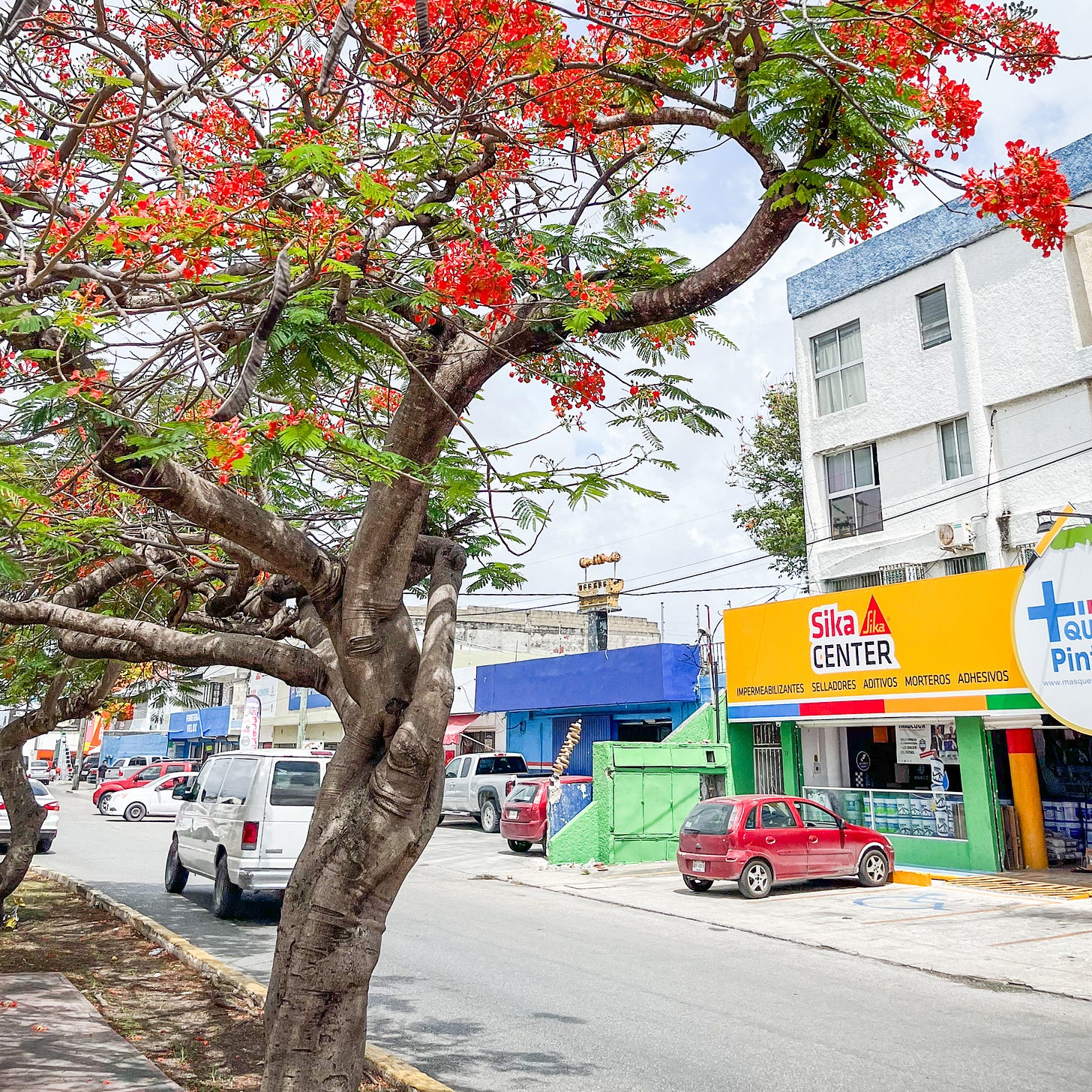
Not wanting to endure another perilous car ride, I set off on foot for El Pocito (Calle 31 Mz. 35, Cancún 77531), immediately realizing that Cancún is not a pedestrian town. I didn’t even attempt reaching the median sidewalk on busy Avenida Chichén Itzá; the reward of a partially-shaded cement strip wasn’t worth the risk of crossing multiple traffic lanes to get there. Instead I stumbled across a miles-long patchwork of commercial driveways and astroturf.
When I reached El Pocito looking as if I had just returned from the fiery depths of the underworld I grabbed the table nearest to the fan lazily rotating in the corner of the room and ordered an agua de chaya, made from the spinach-like leaf of the chaya plant and lime juice. After my first few slugs of emerald-green elixir, the misery of my grueling journey started slipping away.
Physically depleted and stripped of decision-making capabilities, I ordered an obscene amount of food.
First-up: a super-sized platter of huevos moltuleños. El Pocito’s version of this popular egg dish from Motul (a city on the opposite side of the peninsula from Cancún) was pitch-perfect: freshly-made tostadas painted with refried black beans supported three fried eggs, a bright tomato salsa studded with cubed ham and peas and a trio of glistening fried plantains. The contrast of salty ham, spicy, acidic sauce and caramelized fruit, combined with the freshest ingredients, made this dish sing.
Meanwhile, two panuchos — deep-fried corn tortillas filled with refried beans appeared. The cochinita pibil was subtly-flavored compared to that of my beloved El Turix, but delicious. The inky relleno negro, made from an intoxicating combination of charred tortilla, cumin, clove, oregano, black pepper, alliums, achiote, epazote, sour orange, tomato and chiles, was irresistible.
Wrecked from overconsumption and just now beginning to lose the beet-red flush in my face, I glanced around the simple dining room and took note of my fellow diners. I must have looked like an utter freak to this group of locals, many of whom were dressed in long-sleeved shirts and slacks, sipping steaming coffee and hot soup without a bead of sweat on their brows.
In preparation for the next leg of my adventure, I ordered another Big Gulp-sized chaya water and pulled-up Google Maps. I was heading a mile-and-a-half south to Mercado 28, the city’s artisan market, to purchase a píib box (known as a lata de acero) that can be buried in the ground to prepare slow-cooked dishes. My local contact Adrián had kindly checked-in with his family and our hotel’s executive chef Rubén and confirmed I could locate one there for around $1500 MXN ($75 USD).
Everything I had read about Mercado 28 made it seem like a scam-laden, tchotchke emporium so I had questioned Adrián multiple times to confirm it was indeed the correct market for this specialty cooking vessel. After all, in a city with one major market named Mercado 23 and a second one named Mercado 28, you can never be too sure. He promised me Mercado 28 was the place, so off I went.
After another miserable mile-long walk down scorching side streets, I came upon a tourist hellscape. I wanted to scream as I entered a narrow aisle packed with a cruise-ship’s worth of gullibles shuffling along at a snail’s pace. After a hawker called me “pretty lady” and thrust tequila samples my way, I heaved myself out of the scrum towards two vendors beside a jewelry shop window and asked where I could purchase a lata de acero for cooking cochinita. Their reply: “Definitely not here. Have you heard of Mercado 23?”
Fuming with anger yet not willing to admit defeat, I doubled back to my original destination. By this point I had clocked over three miles on foot and soaked my clothing through so thoroughly that I might as well have been wearing a wet bathing suit.
Seeing nothing resembling a lata de acero on my first pass through tiny Mercado 23, I asked people at the tortilleria where I could purchase one and they directed me around the corner to a hardware/home goods stall.
The woman behind the counter showed me a selection of metal boxes that were similar to the ones I saw in Mérida, though with less-shiny surfaces and much smaller in size. Only $700 MXN ($35 USD), I handed over my money and walked out with my very own píib box.
I immediately texted BB a picture of my prized possession with the caption “Success.” I couldn’t wait to return to Chicago, dig a hole in our backyard and start cooking slow-roasted cochinita pibil.
When I was halfway through my ride back to the resort, BB sent through a congratulatory text. Then immediately:
“Woah, wait. Are you still at the market? That looks like galvanized steel. It’s toxic to cook in. The coloration on the surface is from the tin. It’s like cooking food in a tin can. Can’t believe they’re selling that.”
I can’t believe I trudged all over hell-on-earth and ultimately ended-up with a massive tin can. ¿Cómo se dice “dingbat” en español?
The mottled steel box has laid at the base of our bed for the past six weeks, where it will probably remain in perpetuity. I have a feeling we’ll return to Mexico for cochinita before we end-up making any in our backyard.
If you enjoyed this post, please forward it to someone who’d enjoy it, and tap the heart icon above or below, which will help me reach more readers. Thanks!


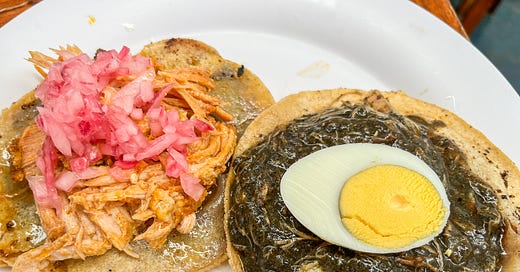


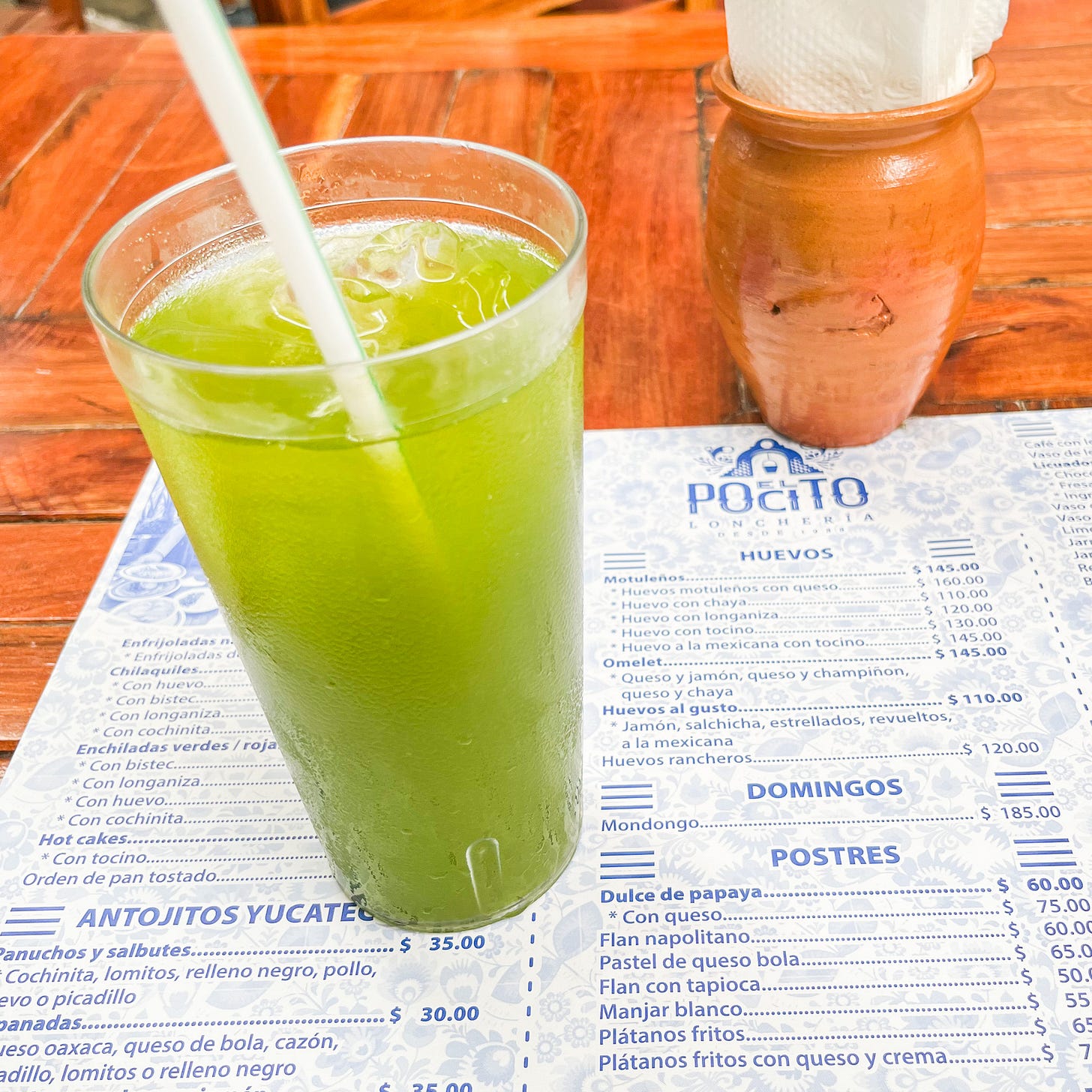
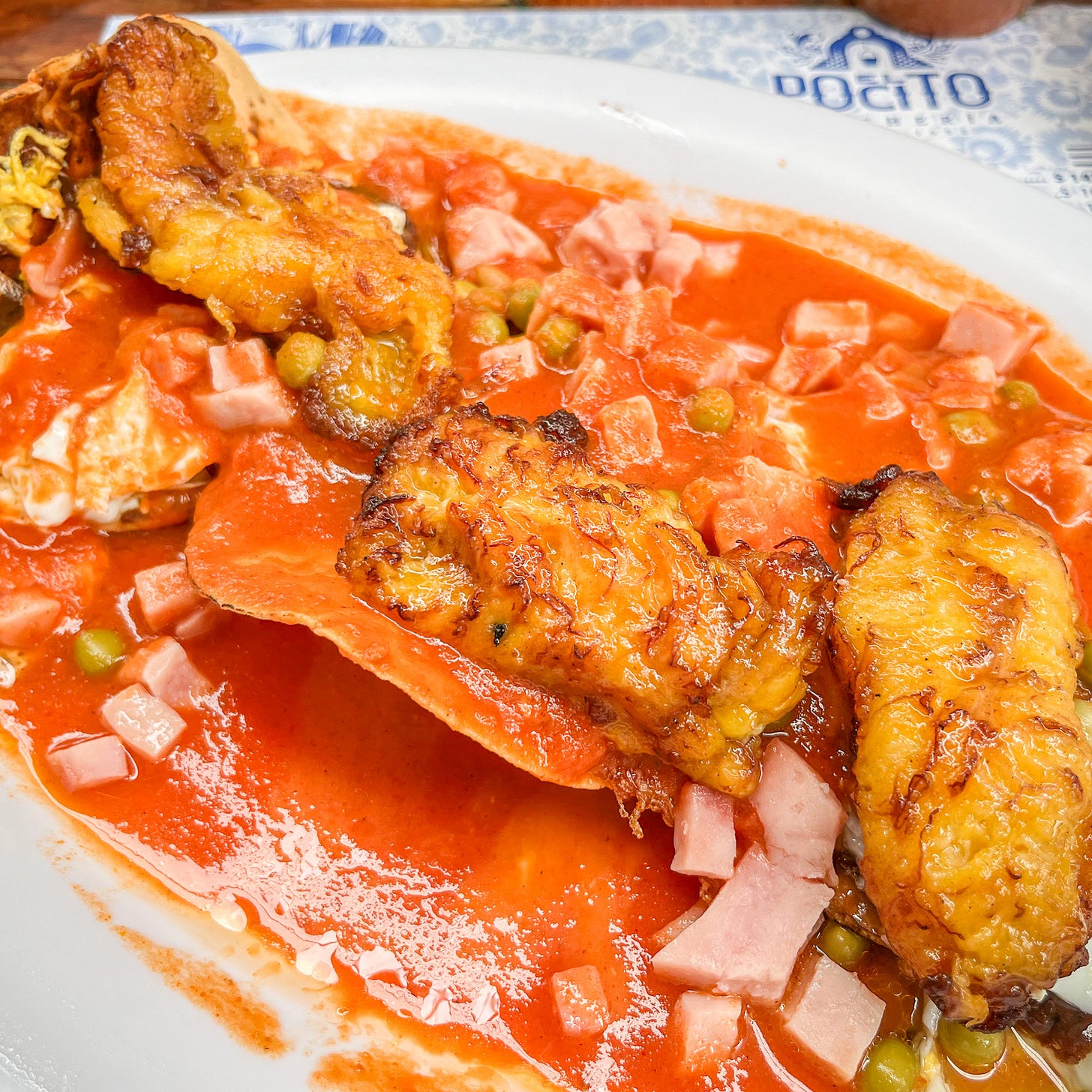

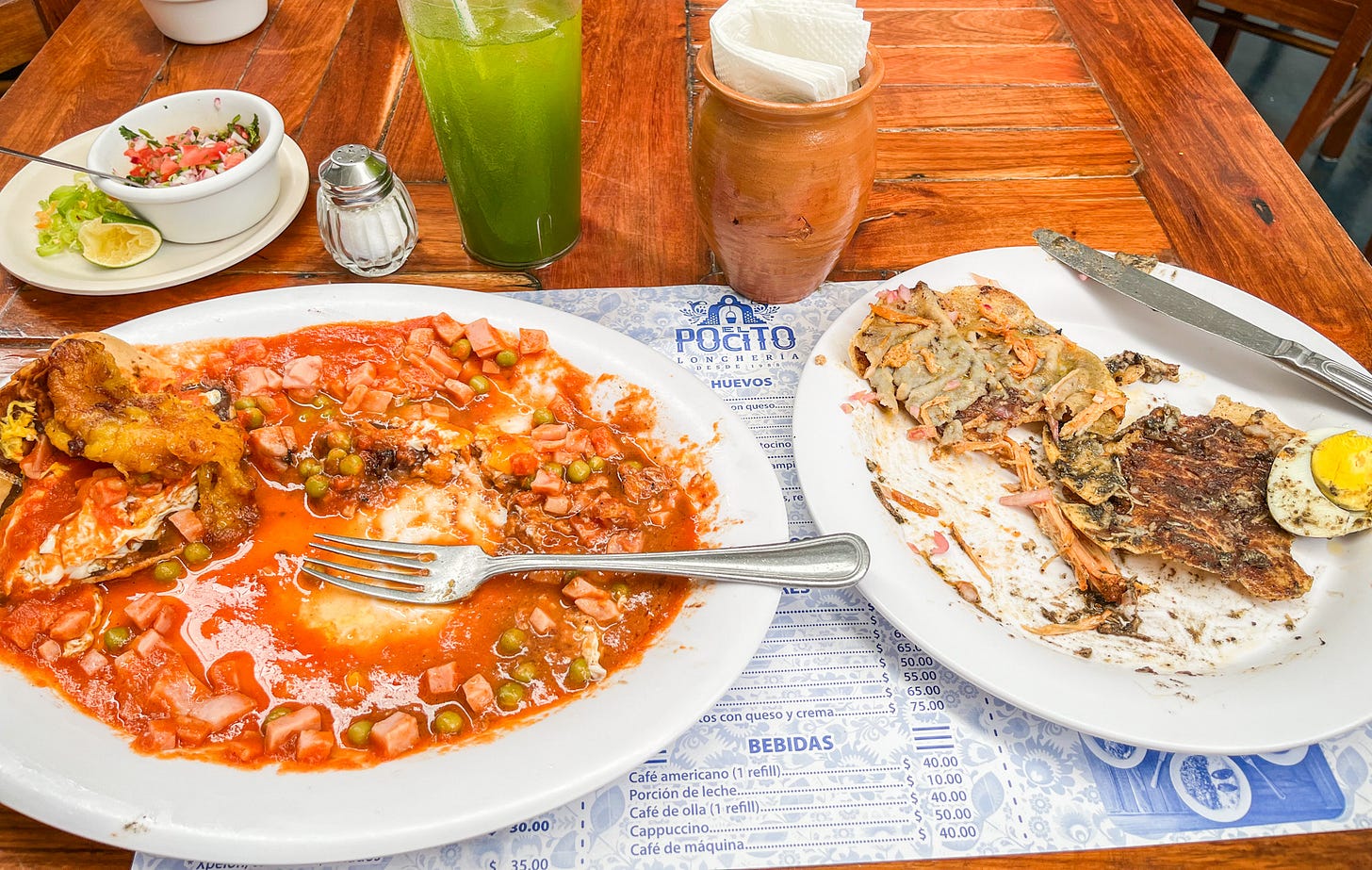

I was just in Cancun for five days and walked a total of maybe three blocks (and deeply regretted it). You are a hero.
I was looking up where each thing was on Google Maps, and the difference in the amount of parking between Mercado 23 and 28 was comical, and telling.